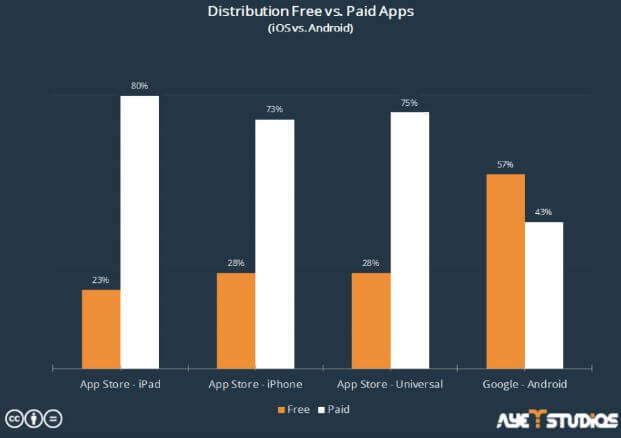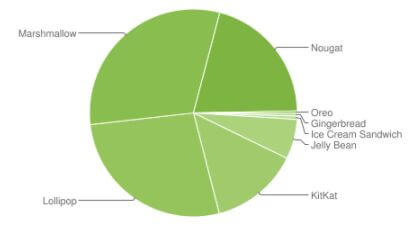You would have definitely experienced the trend in the last 10 years. There is a spurt of mobile apps. Many app development companies are releasing apps for many purposes like gaming, on-demand services, entertainment, productivity, etc. This sudden flow of apps can be attributed to the exponential growth of smartphones and network reach.
Worldwide there is two most used mobile operating system. They are Android and iOS. Both are popular and has its own pros and cons. There are around 5 billion Android devices and 2 billion iOS devices used actively as of now in 2024.
The programming language used for both the platform is different and requires developers with a different set of skills. So, app development companies are always on the roll as to what they have to start. They have the option to start with iOS app or Android app.
There is a problem of reliability, target audience, cost, time, etc which comes into play while selecting which platform to start with. Let us assess some of the factors which affect the selection of app development.
Users
As mentioned earlier, the market share of Android users is more than iOS. Clearly, in countries like India, Africa, China, and, Canada, preferring Android over iOS is better since they are developing countries and iOS device are costly. So, the choice of the majority of people will be an Android device.
If anyone wants to start an enterprise or on-demand firm in these countries, they have to choose an android app for instant business reach. On the other side, in developed countries like the US, Australia, France, the UK, and some other Europe countries, iOS users will be more or less equal to Android users. So, going for iOS app development in these areas will not have a bad effect.

Importantly, e-commerce and on-demand firms should see the target users before app development.
Time & Cost
Usually, iOS app development takes 20-30% less time than Android. This is mainly for the fact that iOS is programmed on Swift which is easy to learn and change.
On the other hand, Android development uses Java programming language which is difficult and the coding long.
If you want to deploy an app in a short time then, iOS is the right choice. But, Apple which developed the iOS platform has strict app verification policies and coding standards.
Similarly, the cost of app development in iOS is relatively lower than that of Android. Since the time taken for Android app development is higher, obviously the resources needed is high which shoots up the cost.
Flexibility
The fact that Android is open source provides more room for customization. You can load the app with more exciting and creative features in an Android app. Of course, being open source means there will be a lot of compromise on coding standards.
By the way, iOS being in a closed market is more secure and has little to no susceptibility to malware attacks.
Tech ecosystem
First of all, a tech ecosystem is a software designed to work well with one another but not with devices outside its platform. The user base of iOS is less than the Android. The no. of devices which works on iOS is also low. So, any app created on iOS cannot be used outside its platform or easily changed to suit other devices.
Monetization
The revenue model in each platform is different and this factor has an influence on the selection of app development. Some of the revenue models are Subscriptions, in-app purchases, advertisements, and pay per download.

Clearly, by seeing the graph you can say that pay per download apps are higher in iOS. Even the no. of such apps are different in iPad and iPhone. So, if you want to charge the user for each download goes for iOS.
On the other hand, the no. of free apps in Android is significantly higher. So, if you don’t want the user to pay per download please go for Android. But, that does mean you cannot monetize using Android app? No. With Android apps, you can generate money using advertisements and subscriptions.
Release cycles

One of the important factors to consider in app development is what version of software do the majority of people have in their devices.
More than 90% of the iOS devices run on the latest versions. So, apps developed with latest technologies work seamlessly on these devices. The app maintenance cost is also significantly lower since the same version of the app can be released for all the users.
The case in Android is somewhat gloomy.
See the above pie-chart. Very few of the users have the latest version of the software in their devices. So, you have to release app versions that suit each software versions.
Finally, taking into account the above factors you have to decide the best platform to release an app. Another way is that you can release the apps one by one after knowing the response of the previous app. Whatever it may be, first build a strong product with a focus on coding standard. This helps you to build a user base and subsequently, you can release the next app.
I’m Divya working at Uplogic Technologies Pvt Ltd, We are a leading producer of on-demand mobile app solutions in the Market. We serve many entrepreneurs in their on-demand business globally. We are specialized in building app-based uber like on-demand business models & taxi dispatching solutions and food delivery app solutions, Our Unique selling proposition is providing free after sale support for some time customization is done at a nominal fee. we have satisfied our clients with dedicated clients service and our developers are experts in fulfilling clients needs with their work.
Company Website: https://www.uplogictech.com/
Our Product Website: https://www.spotnrides.com/